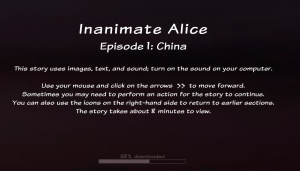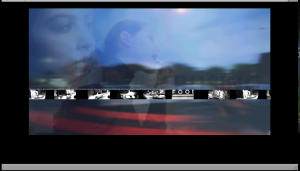Early Attempts at New Media Stories
Part one of an investigation into the kinds of storytelling that are currently thriving in our digital age.
These days in America, nonfiction outsells fiction by a factor of three to one, I’ve heard. And any avid web surfer can tell you that nonfiction is way more popular on the net. Still, I don’t think fiction will go away. Imaginative narratives are hardwired into us. We live nonfiction; we dream in fiction. And we’ve been telling made-up stories to each other for millenia. It’s part of what it means to be human.
That said, there’s no denying that fiction has changed and evolved over the years. And it will continue to do so. Writing was invented some 5000 years ago, and since then, various new technologies have had huge impacts on the kinds of stories told. For instance, the novel exists primarily because of the printing press, though other factors like a growing middle class — with increased leisure time — come into play. But just think about plays, radio drama, movies, television series — all of these were the results of technological advancements.
There’s no doubt that the computer and the internet are also having their effects on the way stories are told. New media interfaces like web browsers, gaming consoles, mobile devices, embedded video, and in at least one case, google maps are becoming the new stages on which our current tales are being acted out. But what do these current tales look like? And are they really any different from fictions we’ve seen in the past? Today, I’ll look at two of the earlier pioneers of the new fiction frontier.
The first computer-aided attempts at interactive storytelling predated the internet, but you can find plenty of those early experiments online. Interactive fiction began sometime in the 70s, I think. Maybe even earlier. The phrase “interactive fiction” is actually a pretty specific type of story, one in which the reader types commands to determine what elements of the narrative will be described next. So, for example, you might encounter a scene like this: “You walk into the room to find a table on which rests an unopened letter and a strange looking box.” You would then type “open letter” or “open box” to expose the next block of text, telling you about the contents of the letter or whatever. I find it a little frustrating since it’s not always completely intuitive and since it ends up delivering plot quite slowly. Take a look at my feeble attempt to navigate one of these things.
Another early foray was hypertext fiction, which basically consisted of a simpler sort of reader involvement than interactive fiction. In hypertext fiction, you just click on links to get to the next section of the story. It’s basically a choose-your-own-adventure novel on the computer. And its heyday was in the 90s. Here’s me navigating the “Starry Pipe Book,” which is typical of simplistic hypertext fiction.
Nowadays, hypertext fiction has gotten a little more sophisticated. They’re often displayed in Flash and include some nice graphics and sometimes audio, so they are truly multi-media. The story “Inanimate Alice” is an example. It provides a very multi-media experience but is still essentially about just clicking to navigate pages.
We can ask the readers to do things other than just clicking on links, though. And many have tackled more experimental/artistic ways of incorporating reader interaction. Ideally, the interaction and the multi-media components have some thematic or narrative purpose. But at this relatively early stage of tweaking story form and structure, you’re bound to get some pretty artsy, postmodern stuff. That’s cool and all, but what you end up with is not really story. Instead, it’s a lot of poetry and experimental writing.
The poem “Cruising” is a good example of a piece of writing that uses its Flash interactivity effectively, even if it’s only a minor supplement to the already-good poem. As the blurb at the ELO Collection states, “Cruising is an excellent example of a Flash poem that, while primarily linear and cinematic, makes use of interactivity in a limited way that complements the subject of the poem, the coming-of-age ritual cruising, with hormones raging, in small town America.”
But then there’s other stuff, like “Soliloquy,” which is “an unedited document of every word [the author] spoke during the week of April 15-21, 1996, from the moment [he] woke up Monday morning to the moment [he] went to sleep on Sunday night.” It took him 8 weeks of working 8 hours a day to transcribe the whole thing. And the end result is something that’s an intriguing postmodern work of art, I suppose. But definitely not something I want to actually read.
And that’s the problem with much of this hypertext stuff. It doesn’t have much mainstream appeal. Not that mainstream appeal is a prerequisite for quality (see American Idol), but it is pretty important in determining what direction fiction will take in the next few decades or centuries. Interactive fiction and hypertext fiction are both intriguing forms of storytelling, but they’re not the next it.



